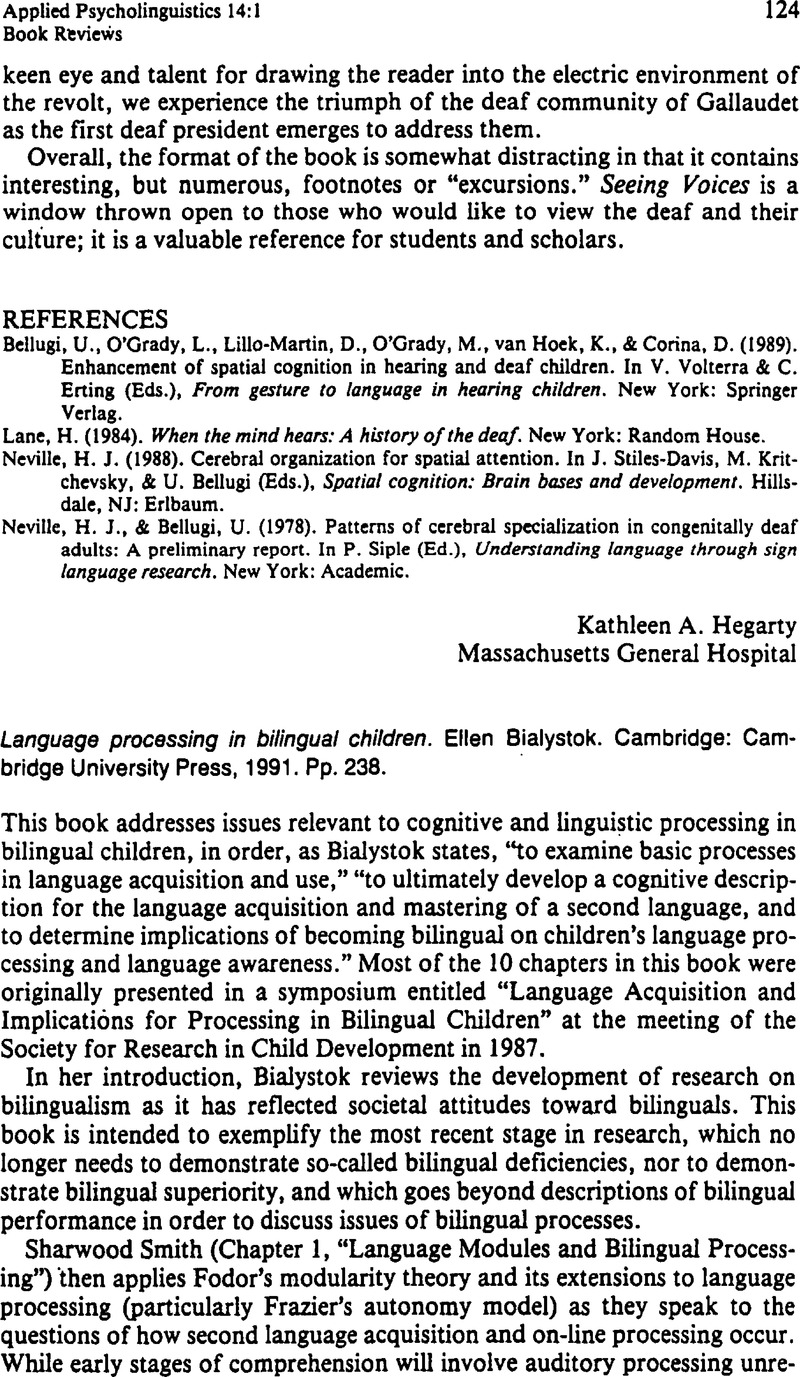No CrossRef data available.
Article contents
Language processing in bilingual children. Ellen Bialystok. Cambridge: Cambridge University Press, 1991. Pp. 238.
Published online by Cambridge University Press: 28 November 2008
Abstract
An abstract is not available for this content so a preview has been provided. Please use the Get access link above for information on how to access this content.

- Type
- Book-Reviews
- Information
- Copyright
- Copyright © Cambridge University Press 1993
References
Bellugi, U., O'Grady, L., Lillo-Martin, D., O'Grady, M., van Hoek, K., & Corina, D. (1989).Enhancement of spatial cognition in hearing and deaf children. In Volterra, V. & Erting, C. (Eds.), From gesture to language in hearing children. New York: Springer Verlag.Google Scholar
Neville, H. J. (1988). Cerebral organization for spatial attention. In Stiles-Davis, J., Krit-chevsky, M., & Bellugi, U. (Eds.), Spatial cognition: Brain bases and development. Hillsdale, NJ: Erlbaum.Google Scholar
Neville, H. J., & Bellugi, U. (1978). Patterns of cerebral specialization in congenitally deafadults: A preliminary report. In Siple, P. (Ed.), Understanding language through signlanguage research. New York: Academic.Google Scholar




